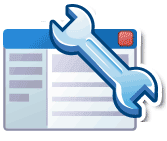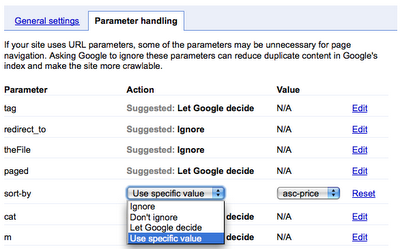 Google Webmaster Tools is very important for any website owner to be familiar with as it provides a valuable insight into how Google perceives your site. It also gives you a variety of options for “tweaking” the way Google crawls and indexes your website. Much of the information provided by Webmaster Tools is not available anywhere else, and for Search Engine Optimisation it is fundamental to measure and monitor some of the stats Webmaster Tools provides.
Google Webmaster Tools is very important for any website owner to be familiar with as it provides a valuable insight into how Google perceives your site. It also gives you a variety of options for “tweaking” the way Google crawls and indexes your website. Much of the information provided by Webmaster Tools is not available anywhere else, and for Search Engine Optimisation it is fundamental to measure and monitor some of the stats Webmaster Tools provides.
If you are not already using Google’s Webmaster Tools, I suggest that you get yourself setup ASAP. Find out more about Google Webmaster Tools, or if you have any questions, concerns, or problems with setting it up, please feel free to contact us for web/internet advice and assistance
What are Parameters?
You have probably noticed URLs which contain a variety of different characters – often including “?” and “&”. Most often these URLs are used by dynamic sites that generate page content, and the parameters are used to determine what information is included on the page and how it is displayed. Here are some examples :
www.example.com/product.php?category=coffee-maker
www.example.com/product.php?category=coffee-maker&cat-id=9999
www.example.com/product.php?caregory=coffee-maker&cat-id=9999&sid=3456
www.example.com/product.php?category=coffee-maker&cat-id=9999&sid=3456&sort=asc
www.example.com/product.php?category=coffee-maker&cat-id=9999&sid=3456&sort=desc
In the above examples the parameters are :
category – a text based title of the category (good for SEO)
cat-id – a numeric code for the item category
sid– a numeric code representing a visitors session id
sort – a field indicating in what order items should be listed
Some parameters affect the content of the page, others can influence how the page is laid out. Search Engines have long been able to recognise and crawl these types of dynamic URLs. However, one problem that can be introduced through the use of parameters is the issue of dynamic content. Each of the example URLs provided above could conceivably reference exactly the same page content – presenting search engines with a dilemma to determine which is the most relevant URL, and which ones should be ignored. Search Engines will try to make a guess at this – but will not always choose the one that you would.
Webmaster Tools Parameter Handling
 Since September 2009 Webmaster Tools enabled site owners to specify up to 15 parameters that Google should ignore when crawling and indexing the site. The main benefit of the feature was to improve the canonicalization of a site in Google’s index due to duplicate content. Canonicalization issues occur when multiple URLs load the same content (as in the example URLs above). However, this was a bit limiting – when you choose to ignore a parameter, you are telling Google that this parameter has NO impact on the displayed content. However, some parameters may not affect the content, but may affect how the content is represented.
Since September 2009 Webmaster Tools enabled site owners to specify up to 15 parameters that Google should ignore when crawling and indexing the site. The main benefit of the feature was to improve the canonicalization of a site in Google’s index due to duplicate content. Canonicalization issues occur when multiple URLs load the same content (as in the example URLs above). However, this was a bit limiting – when you choose to ignore a parameter, you are telling Google that this parameter has NO impact on the displayed content. However, some parameters may not affect the content, but may affect how the content is represented.
Google has recently announced improvements in the way that parameters can be defined in webmaster tools. The new functionality allows webmasters to specify “default values” to certain parameters which don’t necessarily affect the content. This provides greater flexibility for webmasters and improved indexing for Google.
So, using the above example URLs, the webmaster could specify that cat-id and sid parameters should be ignored, and that the sort parameter should default to “asc” (displaying results in ascending order).
Parameter Handling can be found in Webmaster Tools via Site Configuration >> Setting >>Parameter Handling (tab)

